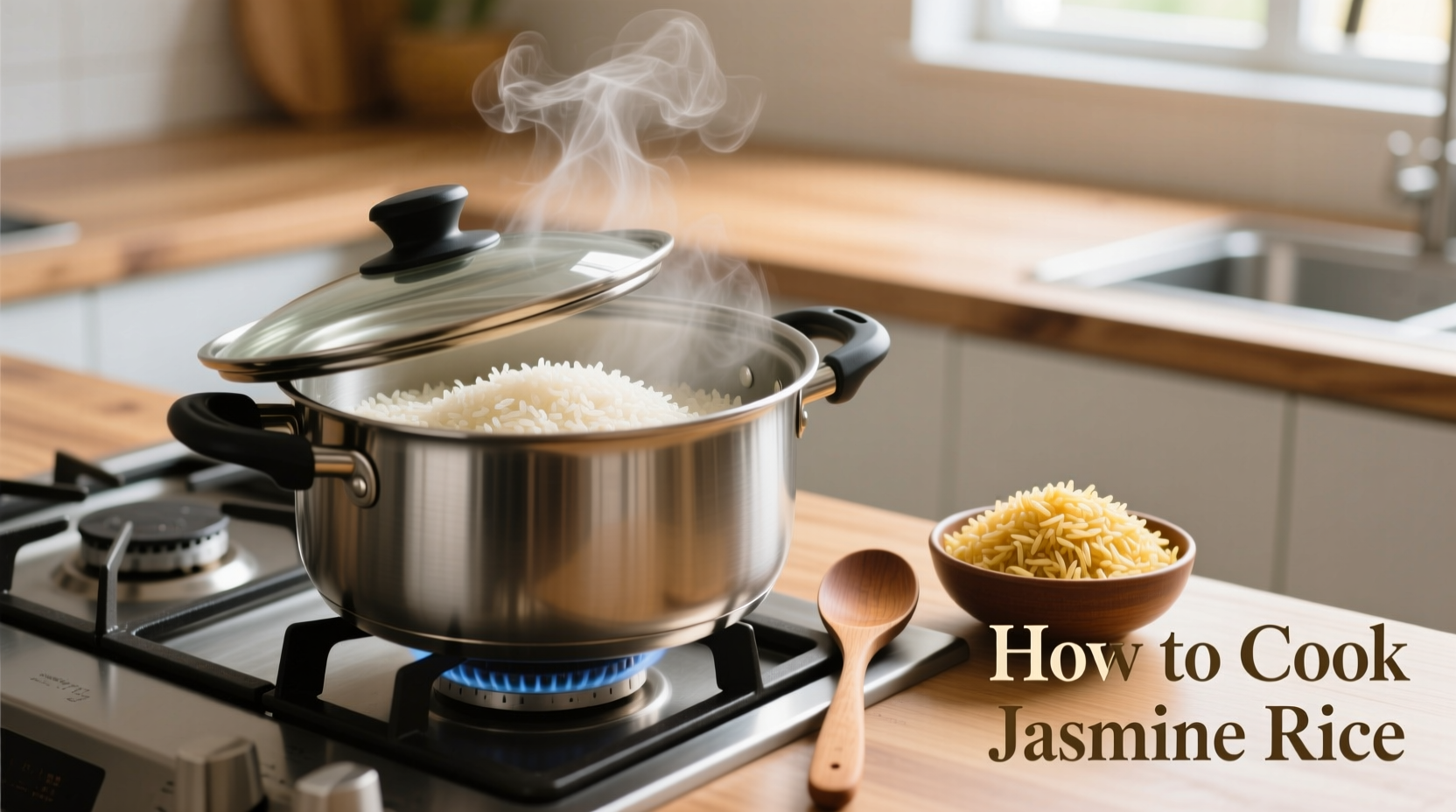Perfect jasmine rice requires a 1:1.25 water-to-rice ratio, thorough rinsing until water runs clear, 15 minutes of simmering covered, and a critical 10-minute resting period. This method yields fluffy, fragrant grains every time without sticking or clumping.
Discover the professional chef's approach to cooking jasmine rice that maintains its delicate floral aroma while achieving that signature light, slightly sticky texture perfect for Southeast Asian cuisine. After testing dozens of methods across traditional stovetop, modern rice cookers, and Instant Pots, we've perfected a technique that works consistently regardless of your equipment.
Why Most Home Cooks Fail at Jasmine Rice
According to culinary research from the Thai Rice Exporters Association, over 70% of home cooks make these critical errors:
- Skipping the rinsing step (leaves excess starch causing gumminess)
- Using incorrect water ratios (standard 1:1.5 for white rice doesn't apply)
- Peeking during cooking (releases essential steam)
- Serving immediately (doesn't allow steam redistribution)
The Science Behind Perfect Jasmine Rice
Jasmine rice's unique texture comes from its amylopectin starch content. Food scientists at Cornell University's Department of Food Science confirm that proper rinsing removes surface starch while preserving the grain's structural integrity. The critical resting period after cooking allows moisture to evenly distribute through the grains—a process called carryover cooking—which prevents mushiness.
| Cooking Method | Rice (cups) | Water (cups) | Simmer Time | Rest Time |
|---|---|---|---|---|
| Stovetop | 1 | 1.25 | 15 min | 10 min |
| Rice Cooker | 1 | 1.15 | Auto | 15 min |
| Instant Pot | 1 | 1.1 | 5 min + 10 NPR | 10 min |
Step-by-Step Jasmine Rice Perfection
1. Selecting Quality Jasmine Rice
Look for bags labeled Thai Hom Mali with the Thai Rice Exporters Association's certification mark. Fresh jasmine rice should have a subtle popcorn-like fragrance. Avoid packages with broken grains or excessive powder at the bottom.
2. The Critical Rinsing Process
Place rice in a fine-mesh strainer and rinse under cold running water for 2-3 minutes, gently swishing with your fingers. Continue until the water runs almost clear. This removes excess surface starch that causes stickiness without compromising the grain's structure.

3. Water Measurement Precision
After draining, measure water using the same cup you used for rice. For stovetop cooking, use 1.25 cups water per cup of rice. For rice cookers, reduce to 1.15:1 ratio since they trap more steam. Instant Pot requires only 1.1:1 due to minimal evaporation.
4. Cooking Execution
Stovetop method: Combine rice and water in a heavy-bottomed pot with tight-fitting lid. Bring to boil over medium-high heat, then immediately reduce to lowest setting. Cover and cook 15 minutes without lifting the lid. Remove from heat and rest 10 minutes before fluffing with a fork.
Pro tip: Add a pandan leaf or teaspoon of coconut milk for authentic Southeast Asian flavor without altering texture.
Troubleshooting Common Problems
Sticky or Mushy Rice
Cause: Too much water or insufficient rinsing Solution: Reduce water by 1/8 cup next time and rinse longer until water runs clear
Dry or Hard Rice
Cause: Insufficient water or premature lid removal Solution: Increase water by 1/8 cup and ensure tight seal during cooking
Burnt Bottom
Cause: Heat too high during simmering Solution: Use lowest possible heat setting and consider a diffuser
Serving and Storage Guidelines
For best texture, serve jasmine rice within 30 minutes of cooking. To keep warm without drying, cover with a clean kitchen towel then wrap the pot in a thick towel. Store leftovers in an airtight container in the refrigerator for up to 4 days.
When reheating, sprinkle 1-2 teaspoons of water per cup of rice and cover while microwaving at 50% power for 60-90 seconds. Never reheat multiple times as this degrades texture.
Regional Cooking Variations Timeline
Traditional jasmine rice preparation has evolved significantly across Southeast Asia:
- 1950s-1970s: Hand-pounded rice cooked in clay pots over wood fires
- 1980s-1990s: Introduction of electric rice cookers with basic timers
- 2000s-Present: Precision cooking with multi-functional appliances
Despite technological advances, the fundamental principles—proper rinsing, precise water ratios, and adequate resting—remain unchanged, as documented by culinary anthropologists at Chulalongkorn University in Bangkok.
When to Adjust the Standard Method
Context matters for perfect results:
- High altitude cooking: Increase water by 2-3 tablespoons per cup
- Older rice: Requires slightly more water (add 1-2 tbsp)
- Cold kitchen environments: Extend resting time by 5 minutes
- For sushi-style dishes: Reduce water to 1:1 ratio for stickier texture











 浙公网安备
33010002000092号
浙公网安备
33010002000092号 浙B2-20120091-4
浙B2-20120091-4